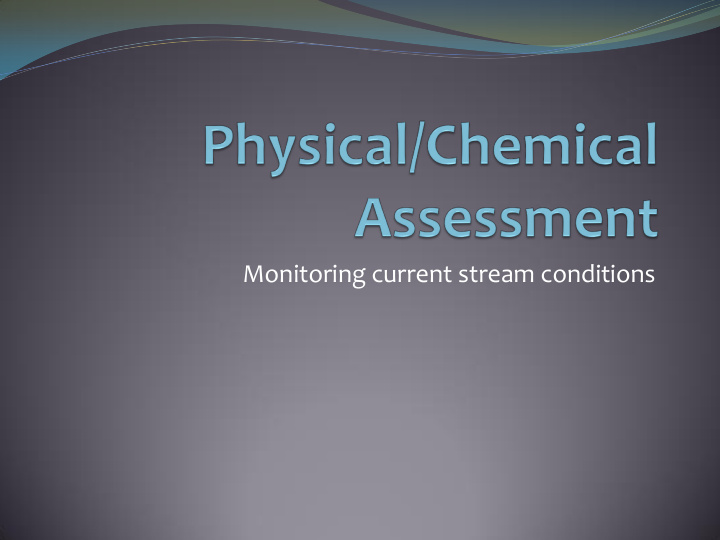



Monitoring current stream conditions
Physical/Chemical Assessment Recommended monitoring frequency = monthly Monitor facing upstream , at transect, in thalweg Check expiration dates Understand ‘expected’ values Extreme natural variations 2
Temperature Air Water Keep dry Let the thermometer stabilize Keep out of direct sun Could take 2 + minutes 3
Precipitation Rain decreases point source pollution because of dilution effect Rain increases non-point source pollution because of surface run-off Record for past 24 hours 4
Water Color 5
Water Odor Manure or sewage Urban or animal waste Rotten eggs Low oxygen levels Petroleum Petroleum source Fishy Stressed biological life 6
Transparency Transparency is a measure of how clear the water is Turbidity is a measure of how dirty water is Measured in centimeters 7
pH Aquatic Life Standard 8
pH 9
Dissolved Oxygen Idaho requires a minimum of 6 mg/L Necessary for aquatic life to survive Affected by numerous variables: Water temperature Season Habitat types Suspended sediments Aquatic plants 10
D.O. Dissolved Oxygen Concentration Dawn Dusk Dawn 11
D.O. Idaho standard for aquatic life Hypoxia Zone 12
Chloride Found in salts Sources: Wastewater treatment Septic systems Road deicing Values >100 mg/L are of concern Optional testing 13
Stream Width and Depth 14
Stream Velocity Measure in 1 m increments along stream transect 15
Stream Flow (Discharge) Strong influence on water quality Measured from depth, width and velocity Estimate if you do not have equipment High Normal Low Not sure 16
17
Special event sampling 18
Snapshot Sampling Occurs twice a year Spring Fall $10/sample for Nitrate, total Phosphorus, total coliform and E. coli 19
Snapshot Procedure Register for Snapshot online Sample bottles will be sent out Samples must be: Collected on day of Snapshot Kept cool during transport Returned by time indicated All samples will be analyzed at UI Coeur d’Alene water lab Assistance in lab welcome 20
Nitrate EPA Drinking Water Standards Nitrate must be below 10 mg/L 21
Total Phosphorus Causes excessive plant growth Decomposition lowers oxygen levels 22
Questions? 23
Recommend
More recommend